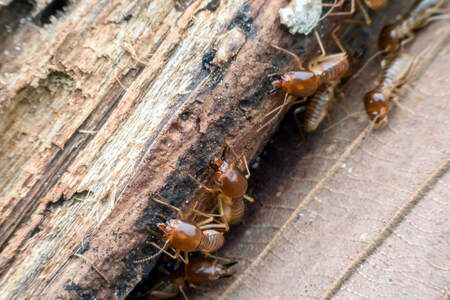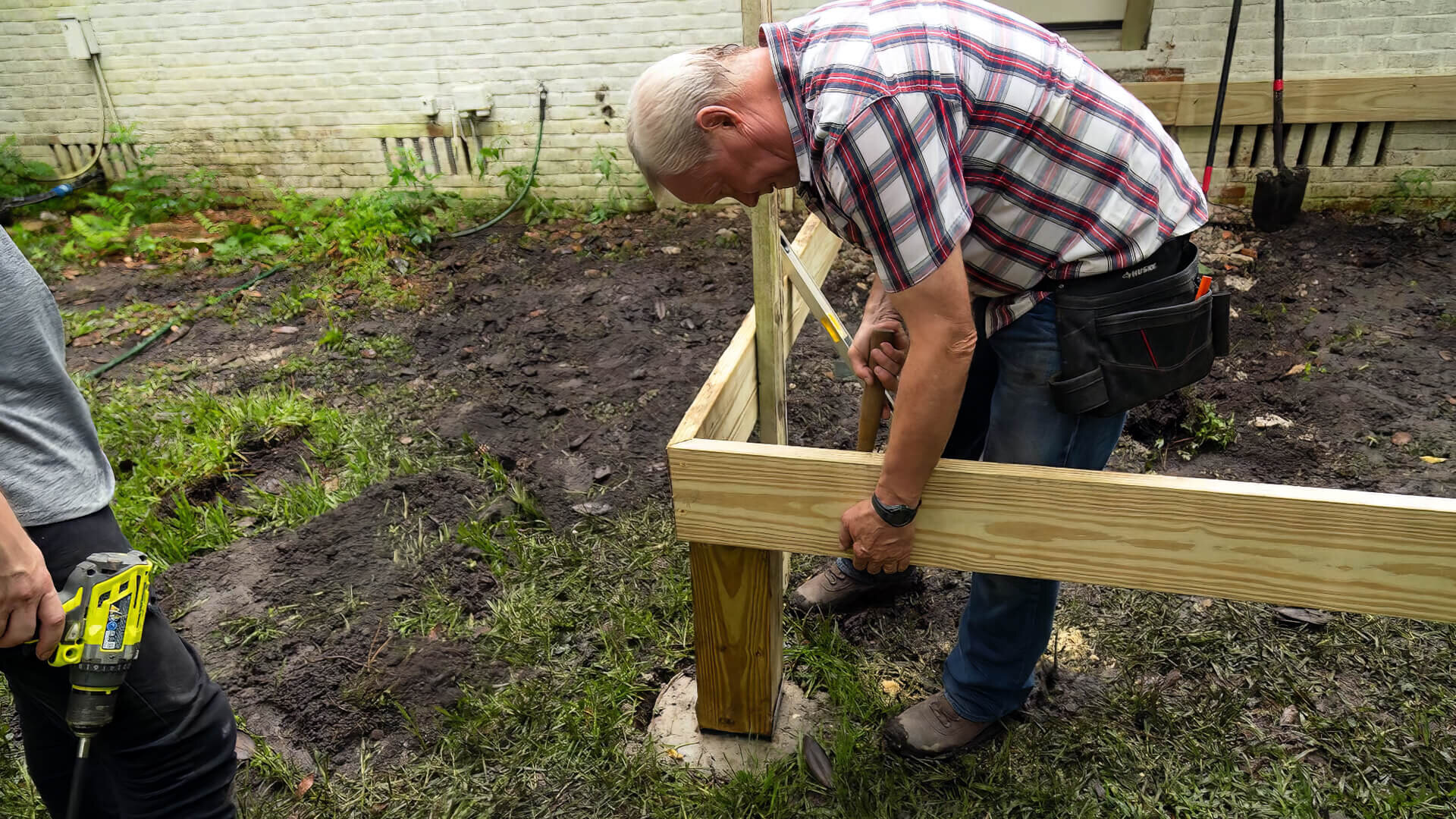
Protecting Your Timber Deck From Termites
Looking for ways to protect your decking from termite colonies? We’ve got you covered with our guide. Final Touch cover everything you need to know about termites and your timber deck.
Read Full StoryA deck can be the perfect place to entertain guests and chill outside!
But the most important thing about installing a new timber deck involves deciding on the kind of deck support. In this regard, two main types of decking support are timber and steel deck framing. Both have advantages and disadvantages, so choosing the right one for your project is essential.

In the following sections, we will help you do just that.

Timber is entirely natural and can be used to make the base for decking. It can contract, expand, and move depending on the weather conditions.
Also, when using timber joists with a timber base, the entire deck structure reacts to changing weather similarly. This reduces the stress that is put on the boards, ensuring longevity.
Timber screens can provide shade while you sit back and relax outdoors. It will keep intruding neighbours away and prevent them from being able to spy on you.
And that is not all; this material comes in different subtle shades to match the deck with your garden decor or the pool fences without repainting it. The natural colour of timber will always stand out.

F7 refers to the strength grade of the timber, indicating how much load it can bear before breaking or permanently deforming. When you see the letter "F", you should know that it refers to the strength of the timber. A higher number will mean the timber is more robust, and you should not settle for anything less than F7.
F7 grade pine is sufficiently strong for structural applications like outdoor decks, large gazebos, and pergolas where durability and strength are paramount. Choosing F7 ensures your structure remains sturdy and safe for years to come.
F7 and treated pine work well for outdoor decks, large gazebos, and pergolas.
The "H" hazard rating refers to the timber’s resistance to biodeterioration - decay, mould, and insect attack. H4 indicates high resistance, meaning the timber is treated to withstand highly hazardous conditions. H4 timber will be very resistant to decay and can be used for outdoor projects.
Besides, it can be used for in-ground installations without moisture and is a great option to pick if you need timber that can stand up to the elements while retaining its structural integrity.
H4 timber will be very resistant to decay and can be used for outdoor projects. Besides, it can be used for in-ground installations without being affected by moisture and is a great option to pick.
H3 refers to timber that is resistant to moderate decay and insect attack. If you need timber for above-ground projects without direct ground contact, then the H3 rating should work well. H3-treated pine has preservatives that protect it from termites, rot, and fungal decay.
This makes it suitable for decks, pergolas, and other exterior structures where it will be exposed to the weather but not buried in the soil. H3 timber can remain serviceable and in a long-term place when used appropriately above ground.

You have guessed it right- the primary advantages of steel include high strength and durability. Not only that, but the material is also adaptable, meaning it can accommodate curves and turns without causing any trouble. And you don’t need a lot of time to install steel decking.
Steel is known for its compatibility with other materials. Hence, you can always use it in parts to strengthen the decking boards, especially for large steel decks needing additional support.
To do this, you can use steel bearers with timber joists and then attach them to the base of the deck. This will help you use the strength of steel without compromising on the decking.
Timber is a natural material that is less likely to cause issues with expansion and contraction. However, it is more vulnerable to rotting and pests, so it may not be suitable for all applications, especially if the area sees a lot of rainfall.
Another point to consider is that steel is much stronger than timber, so if you have a large or elevated deck, it may be the better option. However, steel can rust over time, so it’s essential to correctly protect it from the elements.
You’d be surprised how a simple timber feature wall can spruce up your exterior design and instantly warm up the space. Use horizontal slats or verticle fences to create your preferred pattern to create an eye-catching contemporary design with clean lines. These timber walls can double up as a privacy screen, so if you’re a private person, this might be an excellent way to increase aesthetics and efficiency.
You can also use a timber feature wall to hide your air conditioning outdoor unit or garbage bins. However, remember that these walls usually look better with block textures or shapes, so use timber products with contrasting colours to increase their natural appeal and add warmth.
Build a beautifully patterned timber door to create an excellent first impression and add an old-money, luxurious appearance to your home. This works best with a sprawling area or farmhouse with many compartmentalised areas. Add wooden pillars to support a roof-like structure with terracotta tile cladding to make your home look like a high-end resort.

In short, using steel joists with timber boards is not a good idea, especially if the climate changes often. The steel will not change its shape while the timber will expand, leading to disastrous results and putting a hefty strain on your pocket for the repairs.
Another thing to consider is aesthetics. Timber will give you a classic look and go well with wooden houses. On the other hand, steel decking supports will be modern and streamlined.
With that, it is time for you to enhance the aesthetics of your house with a beautiful deck using suitable materials according to your needs.
We will always suggest getting professional help for the purpose. The installation process of the frame, bearers, and joists may become extremely taxing without expertise. Besides, you may waste the material and weaken the deck’s foundation. And fixing it can burn a hole in your pocket.
If you are building a deck in Sydney, no team is better than the experienced builders at FTCC. We can help you choose the suitable material and design for your patio, including the most appropriate supports. So, call us today for more information!
Looking for ways to protect your decking from termite colonies? We’ve got you covered with our guide. Final Touch cover everything you need to know about termites and your timber deck.
Read Full StoryAre you ready to build a new deck or revamping your existing one? Turn your timber deck into a space your neighbours will envy with our 6 design top ideas!
Read Full StoryLooking for ways to rejuvenate and protect your timber decking in Sydney? Go through our guide to know all about it! Let’s look at the best ways to maintain your timber deck.
Read Full Story

